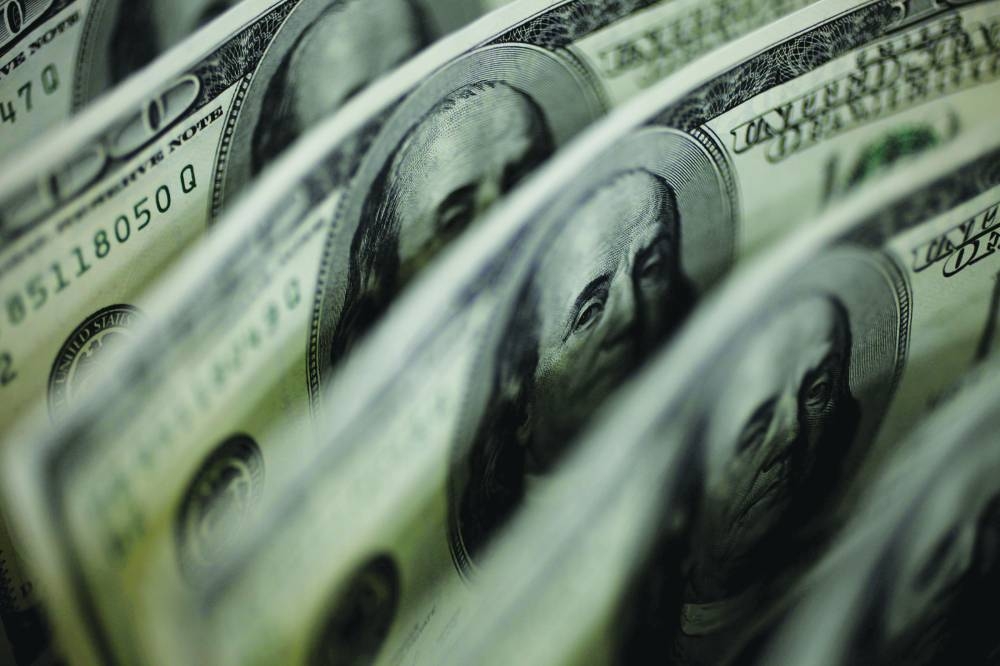These instruments of explosive physical and financial power had a common, peculiar feature: neither could really be used. To deploy either option was effectively to destroy oneself, owing to all the rebound effects, collateral damage, and unintended consequences that would follow. The power conferred was thus more abstract than concrete.
Now, the situation has changed. There are ongoing conflicts where someone could well grow frustrated enough to use a nuclear weapon, as Russian President Vladimir Putin has regularly threatened to do since invading Ukraine. And the dollar has already been fully weaponised as a means of deploying financial sanctions and maintaining deterrence.
True, the problems stemming from dollar dominance have been around for a long time – so long that those who prophesy its demise tend to be dismissed like the proverbial boy who cried wolf. In the late 1960s, the Nobel laureate economist Robert A. Mundell correctly pushed back against the dollar declinists of his day (mostly in France), issuing a remarkable three-part prediction that looked improbable at that time. Namely, he anticipated that the Soviet Union would disintegrate; that Europe would pursue monetary unification; and that the US dollar would remain the leading international currency throughout his lifetime. He turned out to be right on all three counts (he passed away two years ago).
Today, however, the dollar is increasingly vulnerable to financial turbulence, readily apparent in bond markets that scrutinize long-term US public debt. These problems are partly technical, of course; but they are also political. Without uncertainties about America’s long-term fiscal position, markets would remain calm. But President Joe Biden’s administration has deployed large public investments at a time when the US Congress has become completely dysfunctional, casting doubt on its ability even to keep the government running and the debts paid. These fiscal commitments – which have produced strong economic growth – and the political impasse are both likely to be long-term features of US governance.
The dollar is also vulnerable because the rest of the world is connecting the dots behind the US strategy to defend Ukraine against Russian aggression; Middle East diplomacy, which Hamas has now derailed; and efforts to preserve the peace in the Taiwan Strait. The dots, of course, are dollars. As Juan Zarate, a former US deputy national security adviser, noted a decade ago, sanctions work extremely well against small and relatively isolated states; but the bigger the target, the more sanctions will hurt those imposing them.
Yet another reason for the dollar’s new vulnerability is that many Americans have grown deeply suspicious of so-called hyper-globalisation and hyper-financialisation. Apparently speaking for many, the Nobel laureate economist Angus Deaton has published a new book excoriating other economists for ushering in a world so unequal as to provoke pitchforks and revolution. The situation in America today, he suggests, is reminiscent of the social disintegration in late Soviet Russia.
The 2024 US presidential election will bring together all these elements of dollar chaos, especially if there is a recession in the meantime. Amid such high financial turbulence, that scenario may add to the appeal of those proposing that America abandon its post-1945 leadership role and policy positions. After all, the Biden administration has already kept most of the Trump-era tariffs, and US talks with the European Union on tariff reductions and countering Chinese steel exports in World Trade Organisation-compatible ways have failed. There is a very real danger that both Democrats and Republicans will campaign on promises to turn away from globalisation.
Clearly, the international community needs better guidelines for managing financial diplomacy, analogous to those developed later during the Cold War nuclear-arms race. In 1969, the world’s superpowers started taking steps to make the world safer through the Strategic Arms Limitation Talks (SALT), a long process that led to the Strategic Arms Reduction Treaties. While containing and restricting the use of nuclear weapons is still a top priority for the international community, preventing financial self-destruction should be added to the agenda.
Halting the “nuclearisation” of global financial channels means reconnecting with the themes of the post-1945 settlement. At the Bretton Woods Conference and the UN Conference in San Francisco, economics and security were considered two sides of the same coin. But the intimate link between the UN and the Bretton Woods institutions (the International Monetary Fund and the World Bank) was flawed. The five largest shareholders of the international financial institutions were also supposed to be the five permanent members of the UN Security Council. But the veto power wielded by permanent members destroyed that body’s effectiveness, and now the
spirit of the veto has seeped
into the Bretton Woods institutions through supermajority voting rules.
With a simpler majority-based decision-making procedure, it would be possible to institute a judicial process for dealing with and imposing financial punishments – including asset seizures – on rogue states such as Russia. Monetary Arms Limitation Talks could follow in the footsteps of SALT, culminating in a Monetary Arms Reduction Treaty.
This should be a top priority. A more robust international monetary order would generate higher security by creating a stronger global capacity to police against breaches of peace and stem the alarming increase in their frequency. – Project Syndicate
- Harold James, Professor of History and International Affairs at Princeton University, is the author of The War of Words: A Glossary of Globalization (Yale University Press, 2021).

